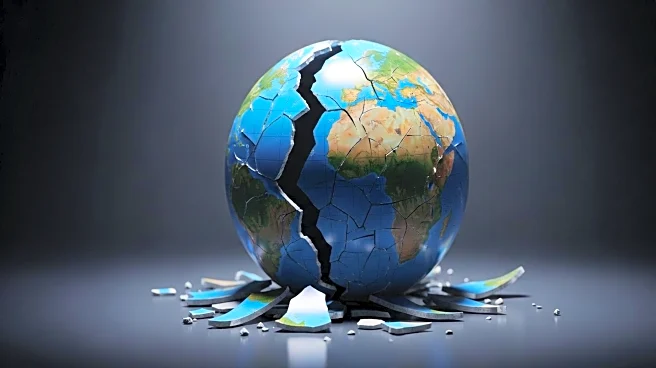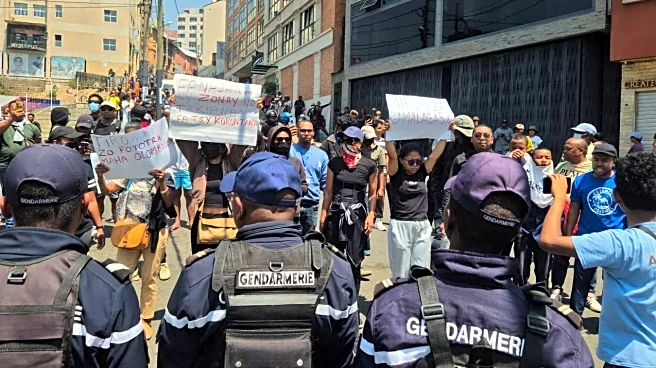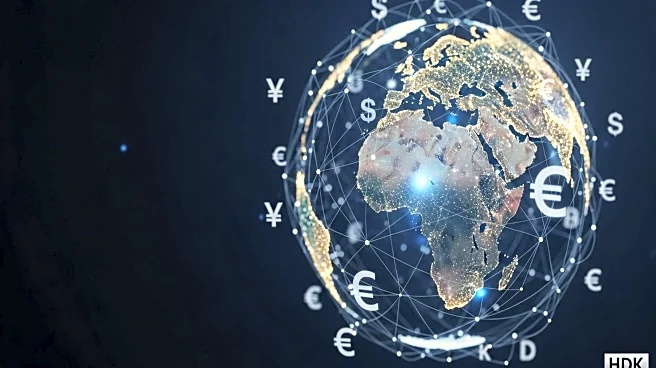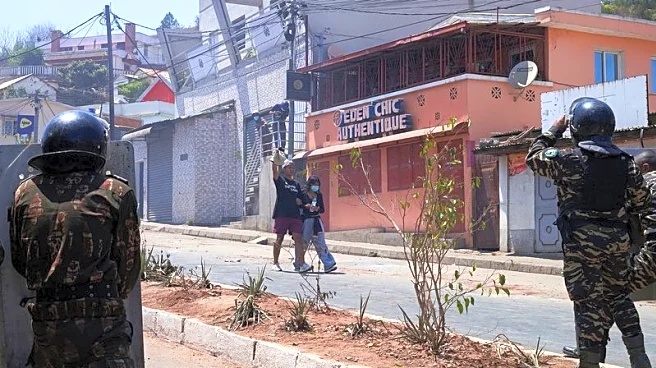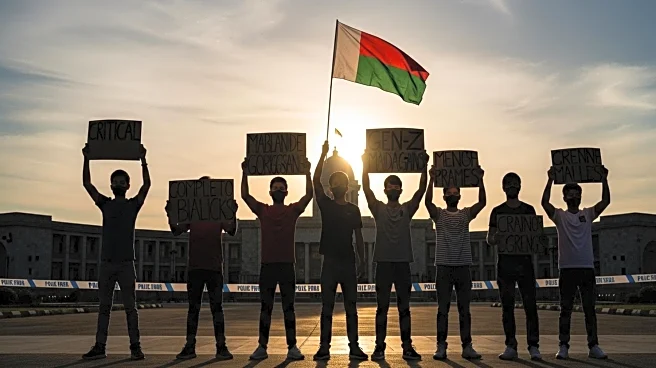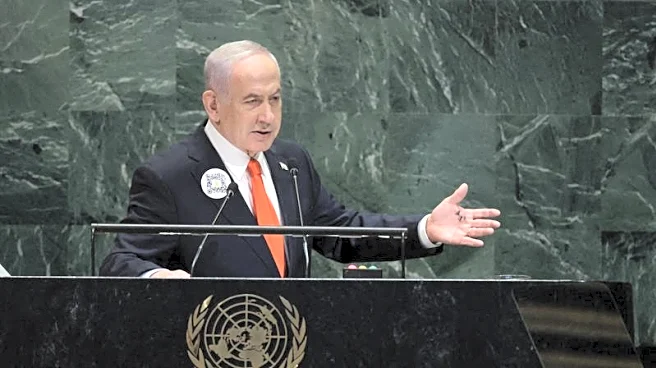What's Happening?
Recent protests across Nepal, Indonesia, the Philippines, and Madagascar have been marked by the presence of a flag from the Japanese manga and anime series 'One Piece.' This flag, featuring a grinning skull and bones wearing a straw hat, has become a symbol for youth-led demonstrations against government corruption and inequality. The 'One Piece' franchise, which follows a crew of pirates challenging a corrupt government, has gained immense popularity worldwide, with over 500 million copies of its print version published and a recent live-action series on Netflix. The flag was first seen at pro-Palestinian marches in 2023 and has since been adopted by various youth movements globally.
Why It's Important?
The use of the 'One Piece' flag in protests highlights the influence of popular culture in political activism, particularly among younger generations. This trend underscores the growing discontent with government corruption and inequality, as well as the ability of cultural symbols to unite and mobilize diverse groups across different countries. The widespread adoption of this flag in protests suggests a shared global sentiment among young people, who are increasingly using creative and unconventional means to express their dissatisfaction and demand change. This phenomenon could lead to more coordinated international efforts to address systemic issues.
What's Next?
As the 'One Piece' flag continues to appear in protests, it may inspire further youth-led movements and potentially influence political discourse in affected regions. Governments may need to address the underlying issues of corruption and inequality to prevent further unrest. Additionally, the role of popular culture in activism could expand, with other franchises potentially being used as symbols for social and political causes. Observers will be watching to see if this trend leads to tangible policy changes or shifts in governance.
Beyond the Headlines
The adoption of the 'One Piece' flag in protests raises questions about the intersection of entertainment and activism. It highlights how cultural products can transcend their original context to become powerful tools for social change. This development also points to the increasing importance of global media in shaping political narratives and influencing public opinion. As young people continue to leverage cultural symbols in their activism, it may challenge traditional forms of protest and lead to new strategies for effecting change.



